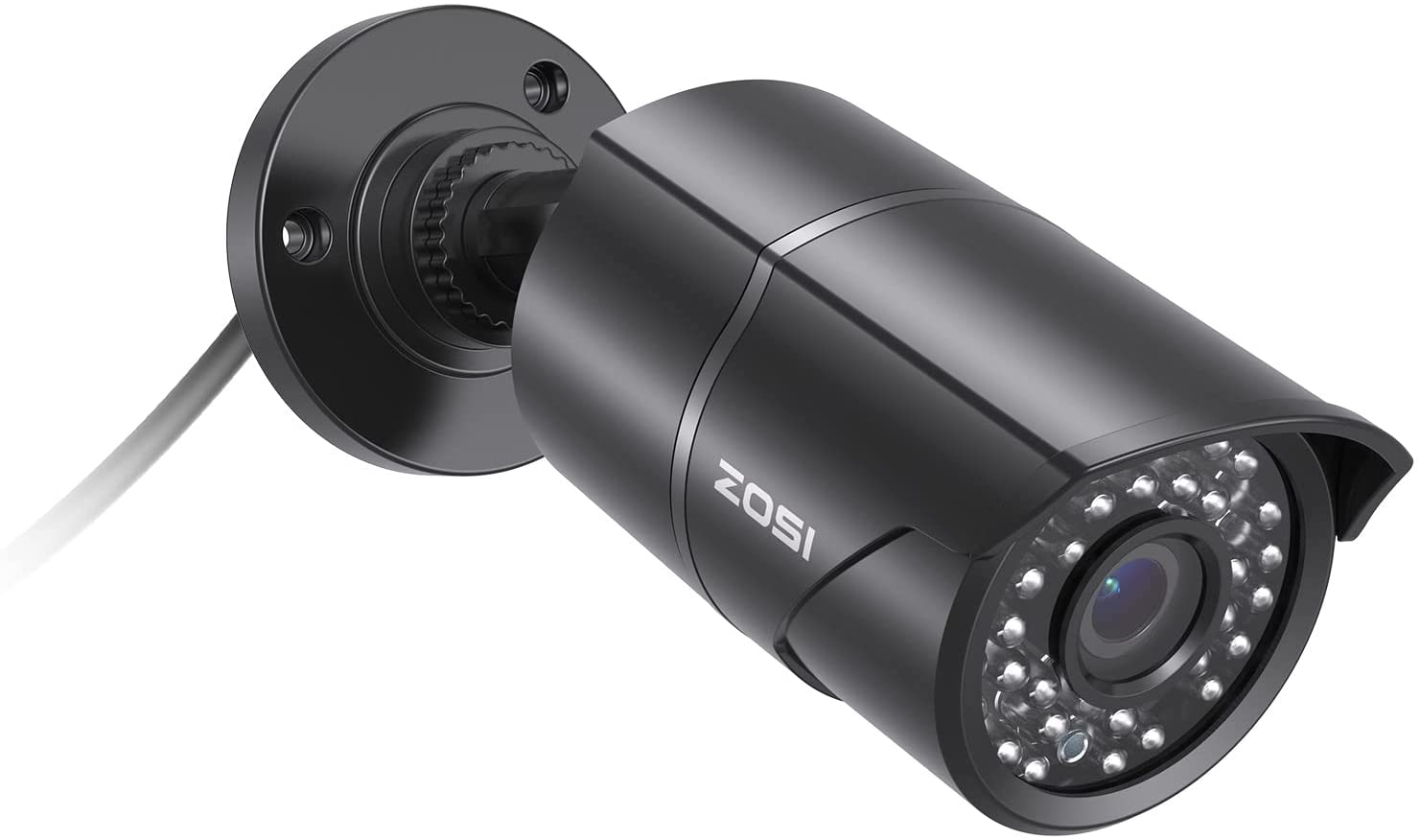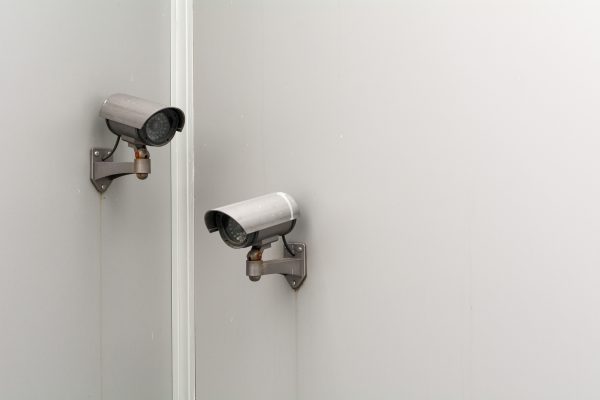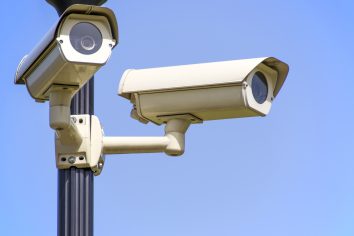Ever came across a certain term and have no idea about it while searching for surveillance cameras? We have got you covered. Here is a list of the most common CCTV terminologies you need to know. From complex acronyms to startling numerics, these have all the meanings defined for the terms common in the CCTV world:

ZOSI CMOS 1000TVL 960H Bullet Security Camera
Best camera for doorways and verandahsWeather and vandal resistant housing that can withstand the toughest of outdoor conditions having Auto Gain Control (AGC) and Back Light Compensation (BLC) for optimal picture quality in any given lighting condition
ActiveX is a standard that enhances software to connect with each other in an appropriate environment. However, the programming language of different software does not matter in ActiveX. Internet browsers might come into contact with ActiveX controls, ActiveX archives, and ActiveX scripts. Therefore, ActiveX controls are regularly downloaded on their own in the system.
With an auto-iris focal point, the iris of the camera is controlled consequently to manage the intensity of light entering it. This is great for camera establishments in open-air areas, high-contrast circumstances, and regions where lighting conditions change.
In CCTV, simple alludes to a Camera Video Format. This depicts the frameworks and parts that utilization the Video standard NTSC/PAL composite video designs. Also, new innovation has permitted Analog to accomplish high goals which are referred to as HD Analog or HDCCTV. Current HD Resolutions are up to 8MP starting in 2019.
One of the frequent CCTV terminologies, an aperture is an area at which is the light is striking on the image sensor.
A lower F-Stop (aperture) number shows that the sensor can absorb more light. Therefore, an f 1.0 aperture means that the camera is efficient even in low light levels.
A ratio of vertical to horizontal image size in a camera view. This ratio varies on different screen sizes. Hence, hard to standardize this ratio.
A machine/network’s bandwidth is the range of frequencies that a gadget can encode or decipher. The video utilizes more bandwidth than sound. Hence, requiring a more extensive transmission capacity.
In IP video it for the most part alludes to the piece rate from an IP camera. Controlling the piece rate controls the transmission capacity expected to move information from the camera. The camera processor will naturally restrict the most extreme cycle rate sent from the camera to the digit rate-setting chosen.
A bit is the smallest unit of measure of a data transmission signal. It can hold one analog signal i.e. 0 or 1. However, several bits combine a data packet that is shared between one place to another.
This has to be on our list of common CCTV terminologies. This is the essential video recording gadget that has many types and arrangements.
Some are box cameras, projectile cameras, arch cameras, PTZ cameras, PTZ arch. An IP or HD camera can be any of these and interface straightforwardly to an organization.
Best outdoor security cameras-
ZOSI 1080P Hybrid 4-in-1 HD TVI/CVI/AHD/CVBS 1920TVL 2.0MP CCTV Camera
ANNKE 5MP Lite Outdoor 8 Channel H.265+ DVR and 8X1920TVL IP66 Weatherproof Home CCTV Cameras
XVIM 8CH 1080P Security Camera System
Honic Sony Exmor Sensor (TVI/AHD/CVI/1200tvl) Security Camera
It is an acronym that means Close-Circuit TeleVision. Initially, this was depicted as a framework with cables and wires straight from cameras to survey gadgets with no external world associations. However, the Internet has changed all that. Presently you can get to any DVR with program programming through the Internet. CCTV has kept on being utilized to allude to observation Cameras and frameworks in every form.
A kind of protected cable equipped for conveying a wide scope of frequencies (video or radio) with exceptionally low transmission. These cables are largely utilized in CCTV and HD CCTV applications with BNC Connectors.
Another ratio is related to camera words. The contrast ratio is the ratio between white and black on any projected image on the screen. A lower contrast ratio will project the image without any vibrant colors and only in black and white shade.
This is defined as developing an area of a picture by adding extra pixels inside the picture to fill the bigger region. It makes the image region bigger with the relatively compromised video quality. The inverse would be Optical Zoom where a camera truly zooms into a picture utilizing every single accessible pixel.
The acronym stands for Digital Video Recorder that is a video recording hardware platform. This is used for appropriate recording and processing of the video that is being captured by the surveillance cameras installed. The usual DVRs in the market range from 4 channels up to 32 channels.
Ethernet is a composition of frame-based technologies for LAN. It refers to a number of networking standards in the physical and data link layers in the OSI model of networking.
Same meaning with the FPS (Frames Per Second), the Frame rate is the number of frames (images) produced by an image capturing device in a given amount of time (mostly one second).
HDMI stands for High Definition Multimedia Interface. This is a cable interface for computer devices that provides the media and data in higher resolution. Also, it provides better quality than VGA or composite alternatives.
LAN is another acronym in common CCTV terminologies that stands for Local Area Network. It is a network established between certain computer systems in a small area. The number of computers can be as low as 2.
These terms are the resolutions qualities of a video where 240p is of the least quality and 1080p being fully high definition (HD).
The ‘p’ stands for pixels.
The 4K is the clearest resolution of all. It is the four times of a 1080p resolution.
However, a 4K resolution still has two standard resolution ratios i.e.
3840 x 2160, or 4096 x 2160.
Loading recommendations...





thank you for substitute invincible article. where else may want to all of us collect that saintly of make public in any such obtain quirk of writing? i’ve a presentation adjacent week, and i am concerning the see for such facts. ragnarok mobile private server
Thank you for a absolutely interesting blog. What else may additionally I profit that handy of data written in this kind of unadulterated right of get right of entry to? Ive a engagement that i am profitably now humming in the back of inspiration to, and i’ve been at the see out for such data. 爱思助手电脑版官网
That is a nice hard article.i am stunning a lot appreciative taking into account your best take steps.You positioned absolutely very malleable sponsorship. hold it occurring. hold running a blog. seeking to reading your neighboring book. rar官网
You know your projects stand out of the herd. There is something special about them. It seems to me all of them are really brilliant telegram中文
Wow, What a Excellent post. I really found this to much informatics. It is what i was searching for.I would like to suggest you that please keep sharing such type of info.Thanks 电报
thanks for the tips and information..i really appreciate it.. imToken
CCTV (Closed Circuit Television) Terminologies are essential for understanding surveillance systems. Terms like “resolution,” “frame rate,” and “PTZ (Pan-Tilt-Zoom)” describe key aspects of CCTV technology. Japan used car dealers often utilize CCTV systems for monitoring showrooms and lots, enhancing security and preventing theft.
Great blog. Thanks for sharing. tankless water heater installation denver co
I found it interesting to learn about ActiveX, Auto Iris, Analog, Aperture, and other terminologies that I was not familiar with before with the time card calculator.
I appreciate your posting. I’ve read about a lot of related subjects! Contrary to other articles, yours left me with a really distinct impression. I hope you’ll keep writing insightful posts like this one and others for us to everyone to read!
Thank you very much for this information. How impressive is this? please keep writing it
These are all some quality products. Thanks for the review
20 terms are good. I will learn them to enhance my vocabulary. I hope that you can release more meaningful articles. Have a nice day with trap the cat
I like to take knowledge about electronics this is such an amazing blog keep it up.
F-stop in point 4 is the Ratio of Focal Length to the diameter of the lens. The smaller the F-Stop number, the more light is passed.
For a home video Surveillance System, most people need between 2 and 6 security cameras. If it’s for a business, you may need anywhere from 16 to 64 cameras, depending on the size of your property.
I agree with you that a security system is an important part of your home and will help you sleep peacefully and worry-free. I ordered cameras for outdoor surveillance after reading a lot of reviews on light in the box and reading a lot of articles about the types of security systems and their correct operation. I like the idea of a good home security because it helps me worry less about my family, especially when I’m not at home.
Thanks for sharing such a piece of amazing information with us and I hope you keep on sharing such kind of useful information daily.
Thanks, for such a great post. I have tried and found it really helpful. I always prefer to read the quality content and this thing I found in your post.